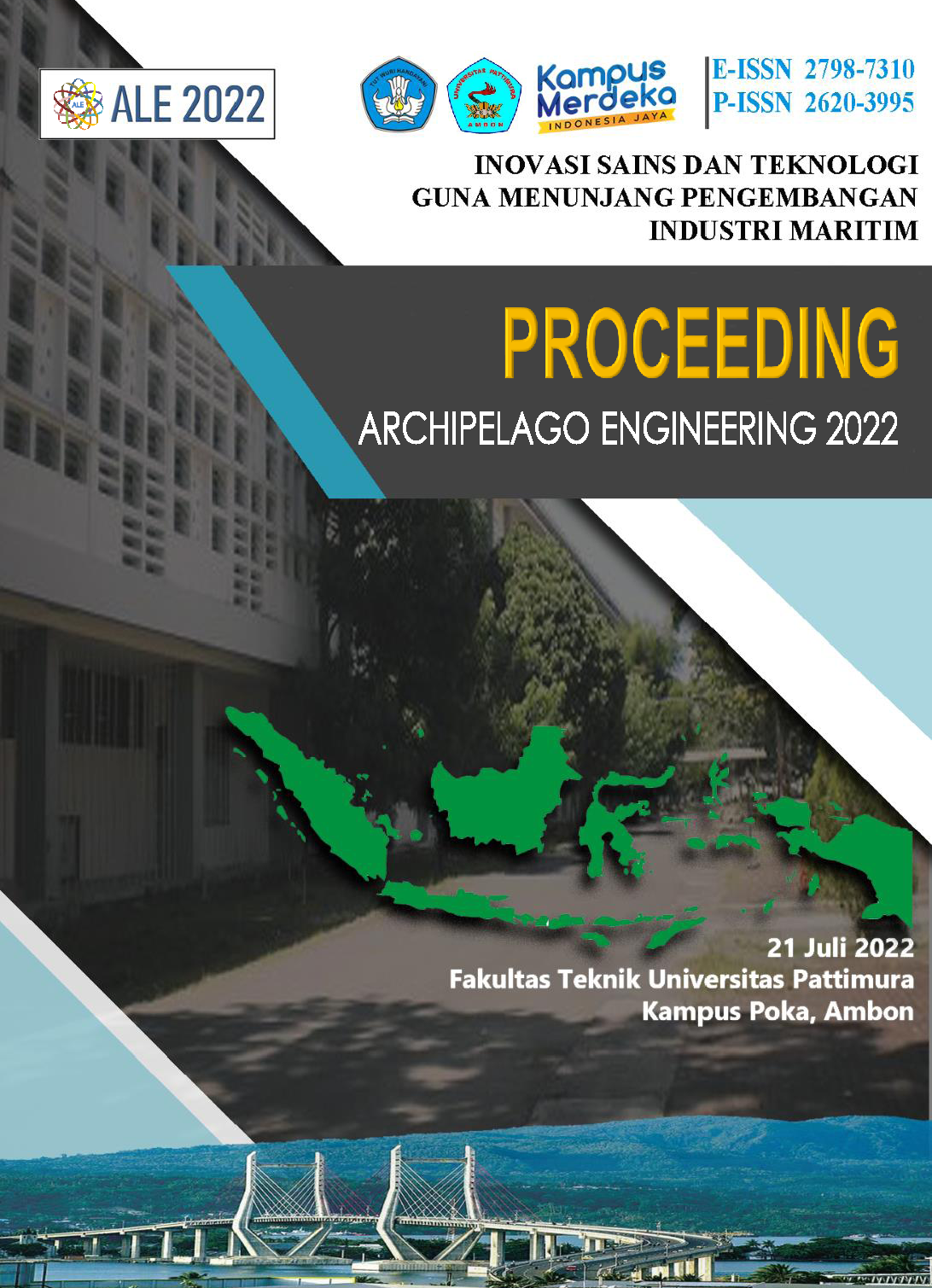ANALISIS KUALITAS LIMBAH WASTE WATER TREATMENT PLANT PADA PLTMG. SERAM PEAKER 20 MW DENGAN MENGGUNAKAN METODE SEVEN TOOLS
Abstract
Hasil wawancara terhadap 20 Orang warga disekitar pembangkit listrik mesin gas, 95% merasa khawatir terhadap dampak limbah wastewater treatment plant. Berdasarkan identifikasi pada kegiatan wastewater treatment plant diperoleh bahwa hasil dari jumlah sampel limbah, 50% merupakan sampel limbah cacat (sampel tidak aman bagi lingkungan). Tujuan penelitian ini adalah memperoleh tingkat kualitas sampel limbah pembangkit listrik tenaga mesin gas seram peaker berkapasitas 20 MW Masohi Maluku Tengah dan Merekomendasikan opsi penyelesaian masalah kualitas sampel limbah pembangkit listrik tenaga mesin gas seram peaker berkapasitas 20 MW Masohi Maluku Tengah. Metode analisis data yang digunakan dalam penelitian ini adalah metode seven tools. Setelah sekema analisis seven tools diterapkan selama dua bulan diperoleh hasil pengujian laboratorium adalah rata-rata nilai ukur Ph 7,4 Mg/liter, nilai ukur minyak lemak 4,0 Mg/liter, nilai ukur COD 85 Mg/liter dan nilai ukur total karbon 89,6 Mg/liter. Hasil pengujian laboratorium tersebut menunjukan bahwa limbah yang dihasilkan WWTP PLTMG Seram Peaker 20 MW adalah aman bagi lingkungan dengan tingkat kualitas 93,75%.
Downloads
References
[2] Mardana, M. Y. A. 2007. Pengolahan yang Tepat bagi Limbah Cair. Diakses dari http://akademik.che.itb.ac.id/labtek/wpcontent/upload/2007/08/modulpengolahan- air.pdf, pada 4 Maret 2019.
[3] Suharto. 2010. Limbah Kimia Dalam Pencemaran Air dan Udara. Yogyakarta: Andi.
[4] Mitra, Amitava. (1998). Second Edition. Fundamentals of Quality Control and Improvement. Upper Saddle River, New Jersey: Prentice-Hall Inc.
[5] Besterfield, Dale H. (1998). Edisi 5. Quality Control. Englewood Cliffs: Prentice-Hall International Inc.
[6] Effendi, Hefni. 2003. Telaah Kualitas Air : Bagi Pengelolaan Sumber Daya dan Lingkungan Perairan. Penerbit : Kanisius. Yogyakarta
[7] Jennie dan Rahayu, (1993), Penanganan Limbah Industri Pangan, Kanisius, Yogyakarta
[8] Wahyono, dkk. (2011). Membuat Pupuk Organik Granul dari Aneka Limbah. Jakarta Selatan: PT. Agromedia Pustaka.
[9] Sugiharto, 1987,Dasar-Dasar Pengelolaan Air Limbah, Jakarta, Universitas Indonesia
[10] Fidia, D. (2017). Pengaruh Ekstrak Daun Belimbing Wuluh (Averrhoa Bilimbi) Dan Jeruk Nipis (Citrus Aurantiifolia) Terhadap Penurunan Kadar Minyak Dan Lemak Dalam Pengolahan Limbah Cair Dapur. Institut Teknologi Yogyakarta.
[11] Santoso, A. D., (2014). Fitoremidiasi Air Limbah Domestik dengan Metode Biology Irigation System. Jurnal Teknologi Lingkungan. Vol. 15 No 2, (2014), Hal. 77-82.
Copyright (c) 2022 Aminah Soleman, Alfredo Tutuhatunewa

This work is licensed under a Creative Commons Attribution-ShareAlike 4.0 International License.
An author who publishes in the ALE Proceeding agrees to the following terms:
- Author retains the copyright and grants ALE Proceeding the right of first publication of the work simultaneously licensed under the Creative Commons Attribution-ShareAlike 4.0 License that allows others to share the work with an acknowledgment of the work's authorship and initial publication in this journal.
- Author is able to enter into separate, additional contractual arrangements for the non-exclusive distribution of the journal's published version of the work (e.g., post it to an institutional repository or publish it in a book) with the acknowledgment of its initial publication in this journal.
- Author is permitted and encouraged to post his/her work online (e.g., in institutional repositories or on their website) prior to and during the submission process, as it can lead to productive exchanges, as well as earlier and greater citation of the published work (See The Effect of Open Access).
Read more about the Creative Commons Attribution-ShareAlike 4.0 Licence here: https://creativecommons.org/licenses/by-sa/4.0/.






